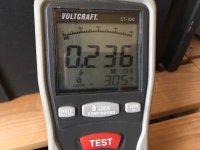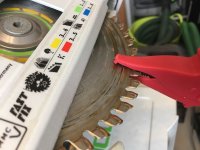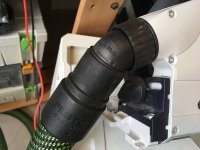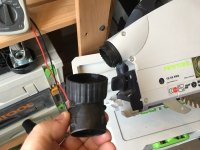I recently designed a very inexpensive, low-profile, cyclone pre-separator that mounts on, and connects to, a Festool Dust Extractor (Seehttps://www.etsy.com/search?q=festopper ). A number of comments that I received related to questions about potential static discharge possibly resulting in damage to the Dust Extractor. Based on all the concern that was expressed about "antistatic" items connected to Festool Dust Extractors, I decided to check my authentic Festool hoses to confirm that they were conductive. Well... guess what? They aren't. Looking at the Festool products, I noted that they specifically refer to their Festool 452877 Non-Antistatic Hose, 1-1/16 In X 11.5 Ft (27 Mm X 3.5 M). Ya gotta love that... "Non-Antistatic". Does that mean "Static"? Anyway, with a Non-Antistatic hose, I don't see why it should matter what's at the other end. Maybe someone from Festool can clarify that for all of us.
Sandy
Sandy









